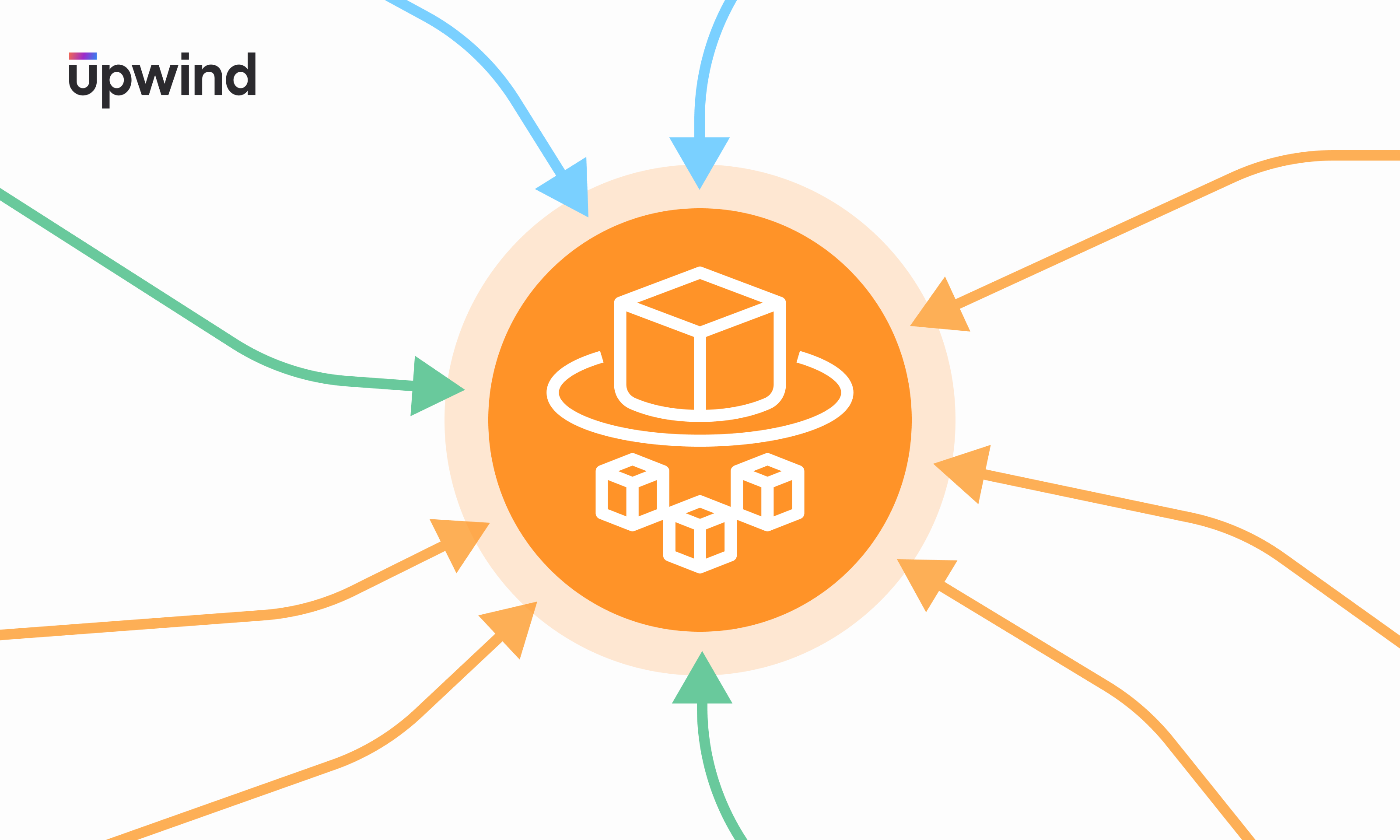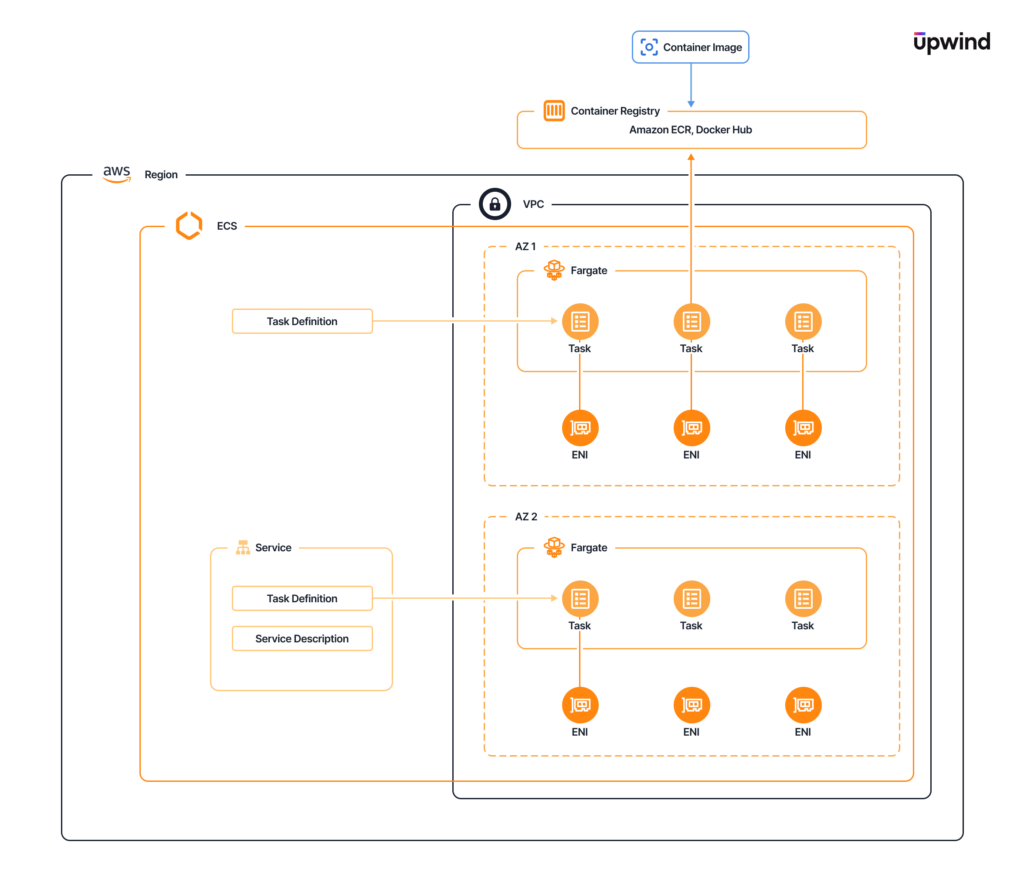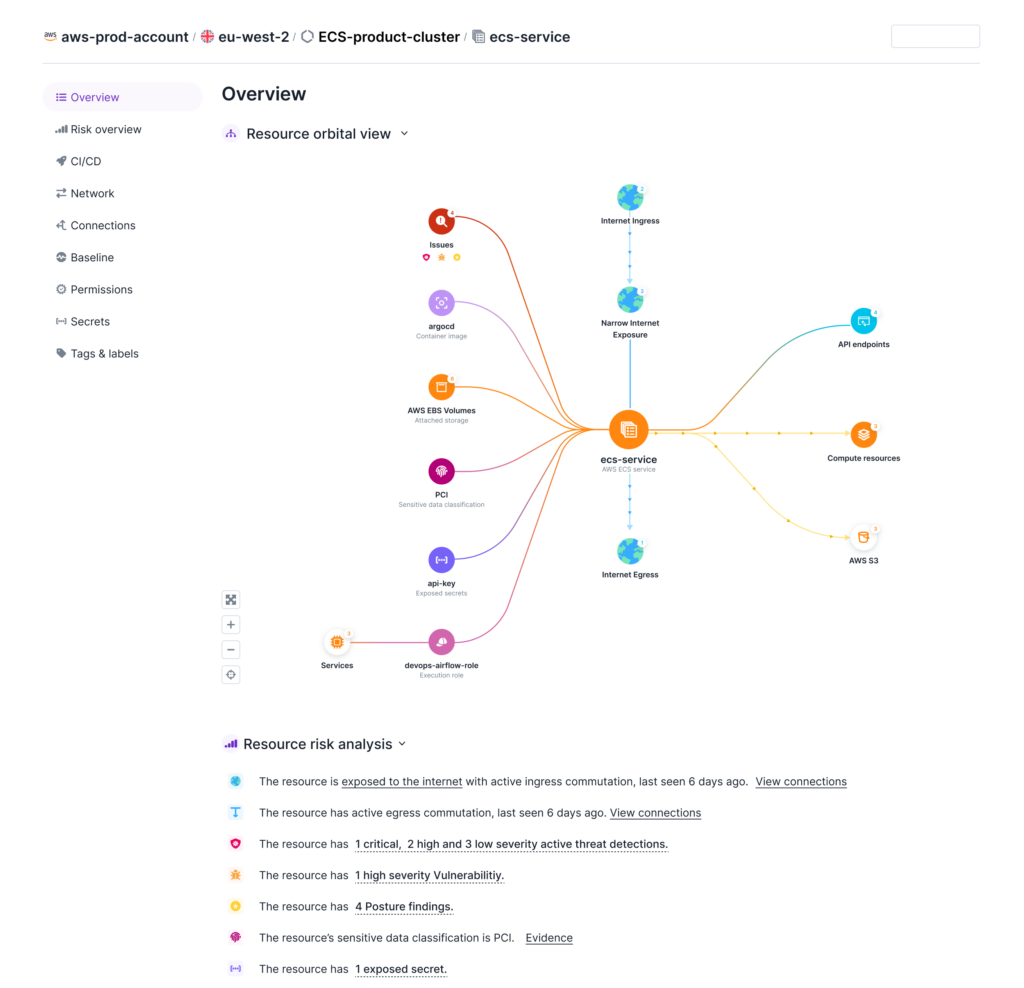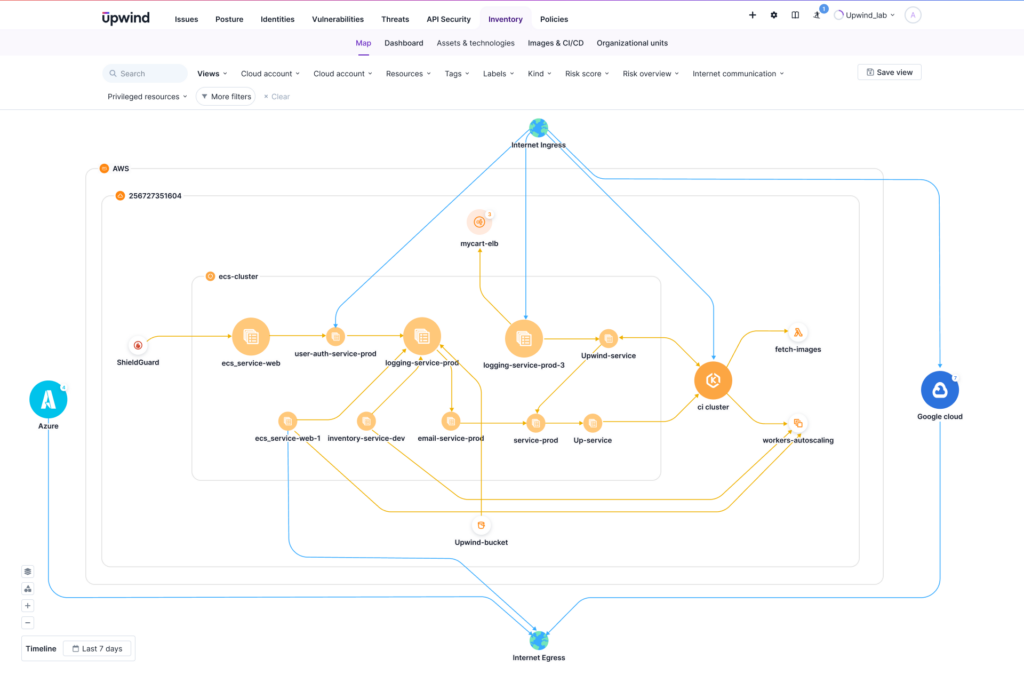
Upwind’s Comprehensive Protection for AWS ECS Fargate Resources
The Upwind platform includes comprehensive protection for cloud infrastructure and applications, including Amazon Elastic Container Service (ECS) Fargate.
AWS Fargate has numerous advantages, but it also presents unique cloud security challenges, which Upwind actively solves with real-time monitoring and protection. In this article, we will cover the basic anatomy of AWS Fargate, challenges that make it difficult to secure out-of-the-box, and ways Upwind tackles these challenges to comprehensive security for AWS Fargate.
The Anatomy of AWS Fargate
AWS Fargate is a serverless compute engine designed for running containers without the need to manage the underlying infrastructure. With AWS Fargate, you no longer have to provision, configure, or scale clusters of virtual machines to run containers. This removes the need to choose server types, decide when to scale your clusters, or optimize cluster packing.
Fargate allows you to focus on your application instead of managing the infrastructure, making it easier to deploy and manage containerized applications in the cloud. It supports both Linux and Windows containers, and integrates with other AWS services such as Amazon Elastic Kubernetes Service (EKS), Amazon Simple Storage Service (S3), Amazon CloudWatch, and AWS Identity and Access Management (IAM).

When you run your tasks and services with the Fargate launch type, you package your application in containers, specify the CPU and memory requirements, define networking and IAM policies, and launch the application. Each Fargate task has its own isolation boundary and does not share the underlying kernel, CPU resources, memory resources, or elastic network interface with another task.
Furthermore, Fargate utilizes task networking to improve communication between containers. Each Fargate task is associated with an Elastic Network Interface (ENI), granting it a unique IP address and enabling direct communication over the local loopback interface. This setup enhances service discovery and allows for better security boundaries, as tasks can be isolated within their own network segments.
Fargate supports two primary networking modes: awsvpc and bridge.
awsvpcNetworking: This mode assigns a dedicated ENI to each task, allowing for VPC-native features such as security groups and network access control lists (ACLs). It provides fine-grained network control and visibility, enabling each task to have its own IP address and interact with other resources in the VPC.bridgeNetworking: This traditional Docker networking mode allows multiple tasks to share a single ENI. It can simplify networking for tasks that don’t require unique IP addresses but may limit the ability to enforce granular network policies.
Top Challenges in Security AWS Fargate
Despite its advantages, securing AWS Fargate presents several challenges:
- Difficult Infrastructure Access: Due to the nature of Fargate architecture, users are unable to interact with the underlying infrastructure. This makes it very difficult to collect runtime data, presenting a significant challenge for real-time monitoring and protection.
- Task Lifecycle Management: Fargate tasks are ephemeral, meaning they can start and stop frequently and require constant monitoring. From a security perspective, any solution that does not include real-time monitoring will struggle to find and monitor Fargate tasks.
- Shared Resources: Operating in a multi-tenant environment raises risks if proper isolation is not enforced. Shared resources can lead to unintended access to sensitive data or services.
- Limited Control: Fargate users have limited control over the underlying infrastructure, and are required to rely heavily on AWS’s shared responsibility model. This can complicate the implementation of specific security configurations.
- Complex Networking: The Fargate task networking model, particularly with the use of awsvpc mode, makes it increasingly complex to secure. In order to adequately secure Fargate, users need a deep understanding of AWS networking concepts.
- Dynamic Network Interfaces: Each Fargate task has a unique ENI, making it complicated to track and manage network policies. This increases the potential for misconfigurations that can expose vulnerabilities.
Overall, while AWS Fargate simplifies container management and enhances networking capabilities, its architecture introduces unique security considerations that the security industry has failed to find a comprehensive solution for. With this in mind, Upwind has carefully designed a solution that includes runtime monitoring for network flows (layer 3, 4, and 7), process execution, and file access – ensuring continuous Fargate monitoring and management.
Upwind’s Comprehensive Security for AWS Fargate

Upwind’s solution for Fargate was designed specifically with these challenges in mind. Fargate users can now leverage Upwind’s industry-leading capabilities to ensure robust protection across AWS Fargate deployments across four main layers of your application stack:
- Network: Upwind monitors all network traffic in real time, including actively monitoring all ECS cluster communication, as well as all the communicating resources under it.
- Process: Upwind monitors every process execution and file activity in real time, actively monitoring for potential threats or anomalies.
- Workload Container Images: Upwind scans all ECS container images in your registry and correlates that information with workload runtime context, actively monitoring real-time environmental variables such as if a package is in use or receiving communication from the Internet.
- APIs: Upwind discovers and catalogs all APIs, monitoring API traffic in real time and over time and alerting to any suspicious activity or unusual traffic patterns.
“Upwind’s native protection for our entire containerized infrastructure, including AWS Fargate and ECS, has greatly enhanced our visibility into resource activity and behavior. With Upwind, we can proactively reduce our attack surface and implement robust security measures, all seamlessly integrated within the platform. This comprehensive approach empowers us to effectively safeguard our containerized applications and maintain a secure environment.”
Abner Severino I CTO, S3 Chile
AWS Fargate in the Upwind Platform

Upwind’s comprehensive Fargate protection is viewable throughout the Upwind platform, including in the following areas:
- Real-time Threat Detection & Response: Detect any threats to AWS Fargate in real time, and view all related events or detections in Upwind’s Threats Tab.
- Vulnerability Management for Fargate: Identify vulnerabilities associated with AWS Fargate resources in real time, as well as receiving deep prioritization information through the Upwind Vulnerability Funnel.
- ECS Inventory: Discover all ECS clusters and all workloads running on EC2 & Fargate in the Inventory Tab. You can also view compute data for ECS services in the Compute Tab and view all running and scanned images in the Images Tab.
- Monitor Real-Time Communication to Fargate Resources: View ECS clusters and all communicating resources under them in the Upwind Topology Map, including real-time network communication and any associated resource risk overviews.
- Proactive Posture Management: Automatically surface posture findings for AWS Fargate resources such as misconfigurations, potential compliance breaches, exposed secrets, malware, and external exposures.
Upwind provides comprehensive Fargate protection as part of a comprehensive cloud security offering, helping you to accelerate productivity and empower your development, security and DevOps teams to innovate within a secure and efficient environment. To learn more, schedule a demo.





